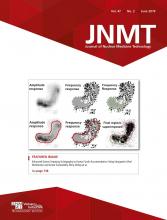The gastric emptying study provides a comprehensive assessment of gastric function and motility using a standardized meal-and-imaging protocol.
CLINICAL INDICATIONS (2)
Evaluation of dyspepsia (pain in the upper abdomen, nausea, vomiting, belching, bloating, distension, fullness, or early satiety).
Evaluation of gastroparesis (delayed gastric emptying or stasis).
Evaluation of mechanical or anatomic obstruction.
Evaluation of weight loss.
CONTRAINDICATIONS
Pregnancy and/or breast feeding.
Allergy to eggs or any component of the meal.
Hypoglycemia (blood glucose level < 40 mg/dL).
Hyperglycemia (blood glucose level > 200 mg/dL).
Recent nuclear medicine study.
PATIENT PREPARATION/EDUCATION/FOOD/MEDICATION RESTRICTIONS
Patients should be told to take no food or liquids by mouth for 4–6 h before the study.
Premenopausal women should be scheduled for imaging during the first 10 d of the menstrual cycle.
Blood glucose should be measured and recorded (insulin-dependent patients should be instructed to adjust their insulin dose so that their measured blood glucose level is <200 mg/dL).
Patients should be told not to smoke the morning of the test and until the examination is complete.
A focused history should be taken of past and current diseases, interventional or surgical procedures, and medications.
Patients should be given a detailed description of the study, including the requirement to consume the solid gastric emptying meal within 10 min, the total time for the procedure and for each imaging session, the position they will be placed in during imaging, and the activity restrictions they will have to follow between imaging sessions.
Patients should confirm that they have discontinued any restricted medications as directed by the referring physician (Table 1).
PROTOCOL/ACQUISITION INSTRUCTIONS
Have the patient eat the meal as a sandwich or as individual items within 10 min. (If the patient cannot eat at least 50% of the meal, the gastric emptying results may be overestimated, resulting in a nondiagnostic study.)
Record the amount of time required to consume the meal, the percentage of the meal consumed, and any issues associated with meal consumption (e.g., vomiting).
Begin the image acquisition (Table 4) immediately in the upright anterior/posterior position with the distal esophagus, stomach, and proximal small intestine in the field of view. Acquire simultaneous images on a dual-head γ-camera and sequential images on a single-head γ-camera. Acquire delayed images at 1, 2, 3, and 4 h. Position a 57Co marker at the xyphoid process to help in positioning the patient for follow-up images. Acquire all follow-up images on the same γ-camera as that used for the initial postmeal image.
If the patient cannot stand, substitute supine images in the left anterior oblique (LAO) position on a single-head γ-camera or supine images in the anterior/posterior position on a dual-head γ-camera.
Recommend minimal activity between imaging sets: encourage the patient to sit comfortably in the waiting room and avoid any strenuous activity.
99mTc-Sulfur Colloid Dose for Solid Gastric Emptying Meal
Ingredients and Cooking Method for Solid Gastric Emptying Meal
Standard SPECT Acquisition Parameters
IMAGE PROCESSING
Quantify gastric emptying by drawing regions of interest around the stomach on all anterior and posterior images. The ROI should include any visualized activity in the fundus and antrum of the stomach. Whenever possible, adjust the ROI to avoid activity in the loops of the small bowel.
Apply radioactive decay correction for the 99mTc to the final results.
Calculate the geometric mean of the anterior/posterior images (square root of the product of the anterior counts multiplied by the posterior counts (√[anterior counts × posterior counts]).
Display the final results as percentage remaining in the stomach for each image set, with the total gastric counts normalized to 100% for time T = 0 (first image set after the meal).
Generate a time–activity curve from the geometric mean of gastric counts displayed for all time points.







